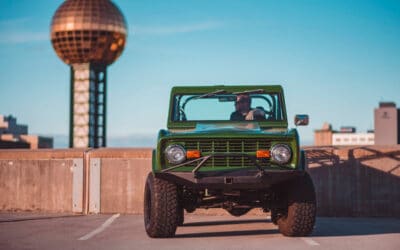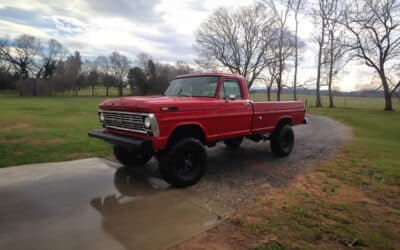Considering restoring a truck but not sure you can afford it? This guide is your practical partner, offering clear steps to restoring a truck on a budget.
From understanding costs and how much money you’ll need, to selecting parts and tackling the rebuild, we’re here to help you navigate the restoration journey. Prepare to roll up your sleeves and transform that idle truck into something that will make all your friends jealous, and all within your budget.
Key Takeaways
- Restoring a classic truck requires evaluation of the potential value versus the investment, with thorough research on the market values of restored trucks to determine if the project is financially viable.
- Planning and budgeting are crucial for truck restoration, encompassing research on parts availability, establishing a vision, setting realistic timelines, and preparing for unexpected expenses to manage costs effectively.
- Key restoration components include engine evaluation and potential rebuild, bodywork to address rust and dents, and interior improvements, while sourcing authentic parts is vital for preserving the truck’s originality.
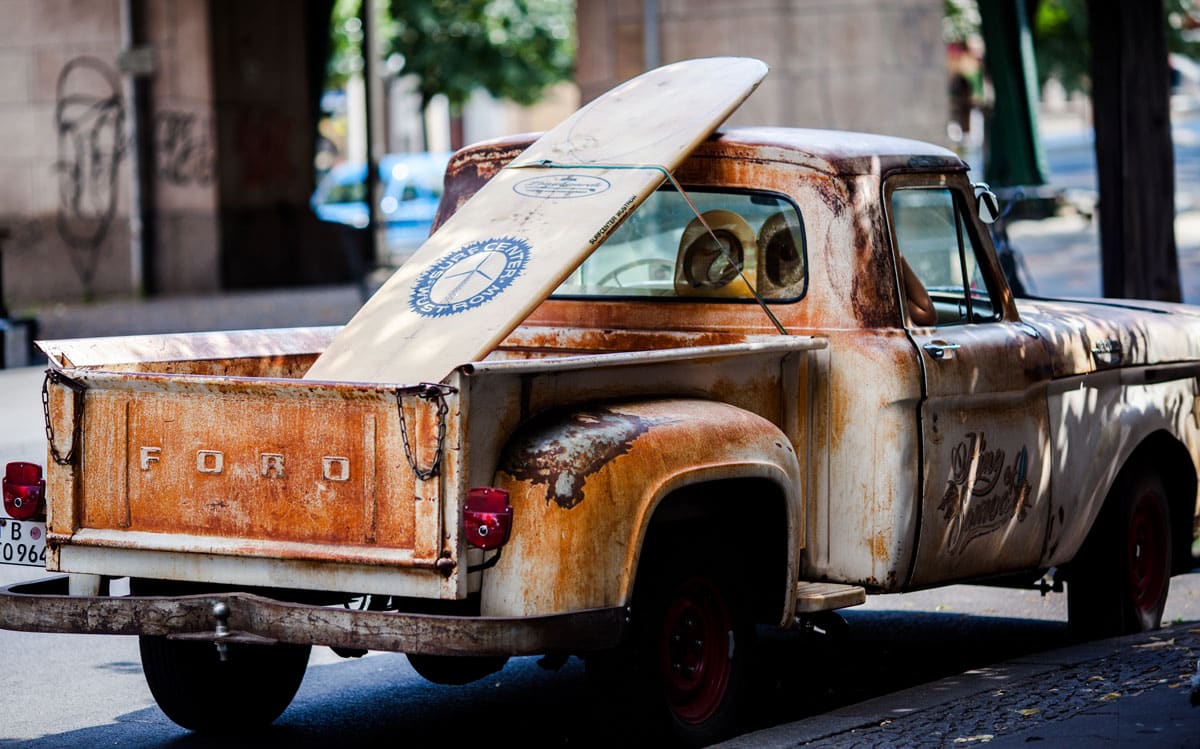
Is Restoring a Classic Truck Worth It?
One might wonder, why go through the trouble of restoring an old truck? The answer is simple: classic trucks have an irresistible look and feel to them. They serve as conversation starters, attention grabbers, and tangible pieces of history.
They evoke nostalgia, and in the case of pickup trucks, they’re usually easier to restore than classic cars. But the journey is not without its challenges. Restoring a classic truck demands time, effort, and, of course, money.
It’s not unusual to encounter unexpected hurdles, hidden issues beyond pre-purchase inspections, and you might have to spend more than you want but it will all be worth it.
The key to a successful restoration lies in weighing the potential value against the investment. Conducting thorough research on the market value of restored trucks is a must.
For example, a fully restored 1947-1953 Chevy Advance Design pickup may be valued around $55,000, while a 1963-1973 Toyota Land Cruiser could fetch $75,000 or more. Understanding these values helps determine whether the effort is worth it, especially if selling the restored vehicle is a consideration.

Setting the Stage for Your Truck Revival
Going on a truck restoration journey requires a good idea, careful planning, and a clear vision. This vision serves as your north star, guiding your decisions and ensuring that the end result aligns with your preferences and standards.
For instance, after selling his 1964 International Scout, a four-wheel-drive vehicle, one of our friends realized, while looking at old pickup trucks, the importance of not obsessing over perfection but focusing on the joy the project brings.
Planning your project effectively involves:
- Researching the availability of parts
- Creating a schedule
- Setting a budget
- Deciding on the required type of restoration
It’s a systematic approach that effectively manages the complexity of the project. Although it’s possible to undertake a frame-up restoration alone, seeking the assistance of a team can enhance efficiency, manageability, and even make the process more enjoyable.
Don’t be afraid to look for ways to make the rebuilding process easier. Sometimes you can find complete chassis already ready to go! You just add the body, the paint, and the interior. It’s like a brand-new vehicle.
Establishing Your Vision For Classic Trucks
It’s important to maintain a clear vision throughout your truck restoration project. This vision is shaped by your desired features, appearance, and functionality.
For example, custom upholstery, modern technology, or upgraded performance parts can be determined by the desired features. The overall aesthetic, including paint color, body modifications, and exterior accessories, defines the appearance.
You need to make sure that the restored truck meets its intended purpose, whether for daily driving, off-roading, or hauling. Make it useable and functional and figure out where you’re going to store it while you do the work.
Setting realistic expectations for restoring classic trucks involves:
- Evaluating the condition of the truck’s systems
- Establishing achievable timelines
- Considering the end product
- Clearly communicating your expectations
Having a clear, practical vision helps you stay focused and makes the restoration process smoother.
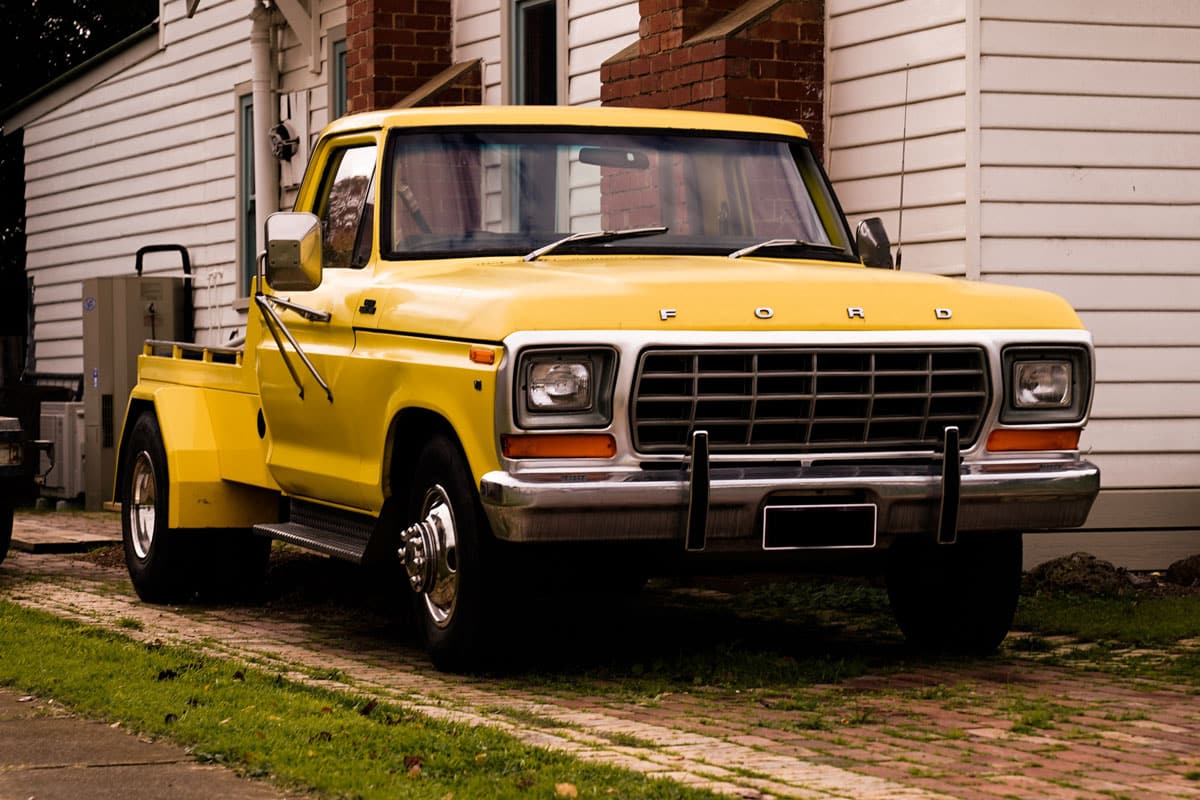
Crafting a Budget Plan
Formulating a feasible budget forms a significant aspect of the planning stage of your truck restoration project.
The cost of a truck restoration project can fluctuate, but it’s advisable to establish a preliminary budget in the range of $20,000 to $60,000 to aid in the initial planning process. This budget should also account for potential upgrades to make the truck more fuel efficient.
You can get by with less money but if you’re doing a complete restoration then you can start at that and end up going much higher. Just try not to get halfway through and decide to sell. It happens all the time, and while it will sell, you’re probably going to make a lot less money than if you started smaller and made sure you could complete each stage before you move on to the next one.
Unexpected expenses are a typical part of any restoration process. Here are some tips to help you manage them:
- Allocate at least $100 per month for unforeseen costs. You’ll find something on Amazon you want to buy or run across some new modern safety features and you’ll want to upgrade. This ensures you’re prepared for any surprises.
- Prioritize restoration tasks within budget constraints. Break down the project into smaller tasks and prioritize them based on their criticality and dependencies. This helps ensure that the budget is allocated appropriately.
- Consider using conversion kits for certain upgrades.
By following these tips, you can better manage unexpected expenses during your restoration process.
Truck Restoration Cost
Factors such as the extent of restoration needed, the quality of materials used, and the proficiency of the professionals involved can influence the cost of restoring a classic truck. A full restoration may require hundreds of hours of manual labor and can be quite expensive.
The labor charge for classic truck restoration is typically upwards of $100 per hour. The total restoration costs, including labor, can be substantial, potentially ranging from $40,000 to $60,000, depending on various factors. Make a point to know what goes wrong most often with the old vehicles you choose and make sure you can either find OEM parts or aftermarket parts that are high quality.
The most expensive components to replace in a classic truck restoration are:
- the engine
- the transmission
- the suspension
- the body panels
- the interior components
Assessing the Workload
Another crucial step in planning your truck restoration project is evaluating the workload.
The condition of the truck at the time of purchase can give you a good indication of the amount of work needed. For example, you might find a 1975 International Scout that exhibited fluid leaks and other issues, while another 1968 Ford Bronco is predominantly afflicted by rust and insect nests.
Restoring a truck involves a steep learning curve. You can expect a rapid proficiency in mechanical repair knowledge and you’ll end up with a lot of mechanics tools but be ready to talk to your community because someone somewhere has gone through what you’re going through and can help you figure it out. Check your forums, go to car shows, find your people in a Facebook group because you’re going to have to do these things at some point:
- Replacing valve cover gaskets
- Replacing oil pan gasket
- Replacing transfer case gasket
- Replacing spark plug wires
- Replacing exhaust manifold gasket
- Replacing a wheel bearing
Things are already wrong with your truck before you buy it and they are going to go wrong over the time that you own it. But it’s your vehicle, in your garage, and you have the chance to restore something with the right parts to make it work better than new.
Just be sure to assess the workload and skill level required before embarking on your project, and know a good restoration shop if you get in over your head. Just know, they like to charge more if they know you took a crack at it and couldn’t do it yourself.
Anatomy of a Truck Makeover
Several key components make up a truck restoration project, with the engine being one of the most critical. Reviving a classic truck engine involves the following steps:
- Use an engine hoist to lift out the engine, if necessary.
- Thoroughly clean the engine and drain all the old oil before proceeding with any additional work.
The truck’s body is also a significant component. Restoring the body of a truck with rust entails:
- Removing all rusted sections
- Treating any remaining metal with a rust inhibitor
- Welding new steel into place
- Applying a skim coat, primer, and final paint.
Upgrading the interior is just as important. You can find a company to make new custom seats or find some seat covers and get creative with patches or embroidery that can provide a unique touch without having to spend a fortune. You can find really creative people and things online if you take the time to look and you’re not afraid to stand out from the crowd.
Bringing The Engine Back to Life
Reviving a classic truck engine is a detail-oriented task. An assessment of the engine’s condition is vital to determine the need for repair or restoration, and to compare the cost of these options with the potential benefits and value.
Deciding whether to repair or replace a truck’s engine during restoration is a significant decision. Opting for a rebuild may be preferable if maintaining the vehicle’s original value is a priority, as opposed to an engine swap which could potentially diminish its value, especially if using a used engine.
There’s also something about using a new crate engine that is dependable and you know it’s going to start every time. All this just depends on what is most important to you. I like the look of classic trucks but I also want to know it will start every time I crank it up.
Restoring a truck engine comes with its own set of challenges. These can include:
- Improper installation of components
- Incorrect assembly
- Increase in fuel consumption
- Loud knocking sounds
- Excessive smoke
- Not taking accurate crankshaft measurements
To acquire parts for classic truck engine restoration, resources such as JEGS, known for its extensive catalog of classic truck parts, including engine and transmission components, can be used.
Body Work Breakdown
Restoring a truck’s body is a process that requires significant labor. Dents in the truck body need to be carefully assessed to determine whether they can be repaired or if professional help is needed.
If the dent is deemed repairable, the process involves gathering supplies, sanding around the dent, applying auto body filler, and smoothing out the surface with sandpaper.
Rust is another common issue with old trucks. It is possible to remove it if hasn’t eaten it’s way through the metal by:
- Applying a water and automotive soap mixture to the affected area
- Mask off the area
- Apply your rust removal spray
- Use abrasive wheel or sandpaper to remove the rust and the paint around the area
- Wash with a degreaser
- Reveal the metal and prep for any body work that needs to be done.
Welding can also be a crucial part of restoring the body of a truck, especially when dealing with rust. The process involves:
- Preparing the replacement panel
- Drilling holes along the seams
- Using proper spot welding or gas shield MIG welding techniques
- Employing TIG welding for patch panels.
Interior Innovations
Since most of your time will be spent in the interior of the truck, ensuring it’s comfortable and aesthetically pleasing is worth it. The restoration of a truck’s interior usually involves:
- Thorough cleaning
- Replacing the carpet, vinyl, leather
- Applying protectant to plastic and trim surfaces
- Installing dash kits and fixing cracks
- Cleaning and conditioning hard surfaces.
Replacing a truck’s upholstery is another important part of the interior restoration. The process involves carefully laying out the new fabric on the frame, securing it one side at a time, and ensuring it is taut and smooth across the frame.
This is something I always have someone else do. It’s okay to not be good at some things.
The dashboard is another vital part of the truck’s interior. Restoring and repairing it involves vacuuming, washing with soap and water, and drying. Any cracks or damage can be repaired using a padded dash filler applied with a plastic spreader or you can get a new one.
Sometimes it’s just easier to get a new one.
For a more modernized appearance, upgrades can make a huge difference:
- Seat and soft furnishings for enhanced comfort
- Custom upholstery
- Fiberglass dashes
- A custom paint job
- Custom leather
- Replacement of floor mats
- Interior vinyl
- Steering wheel covers
- Racing pedals
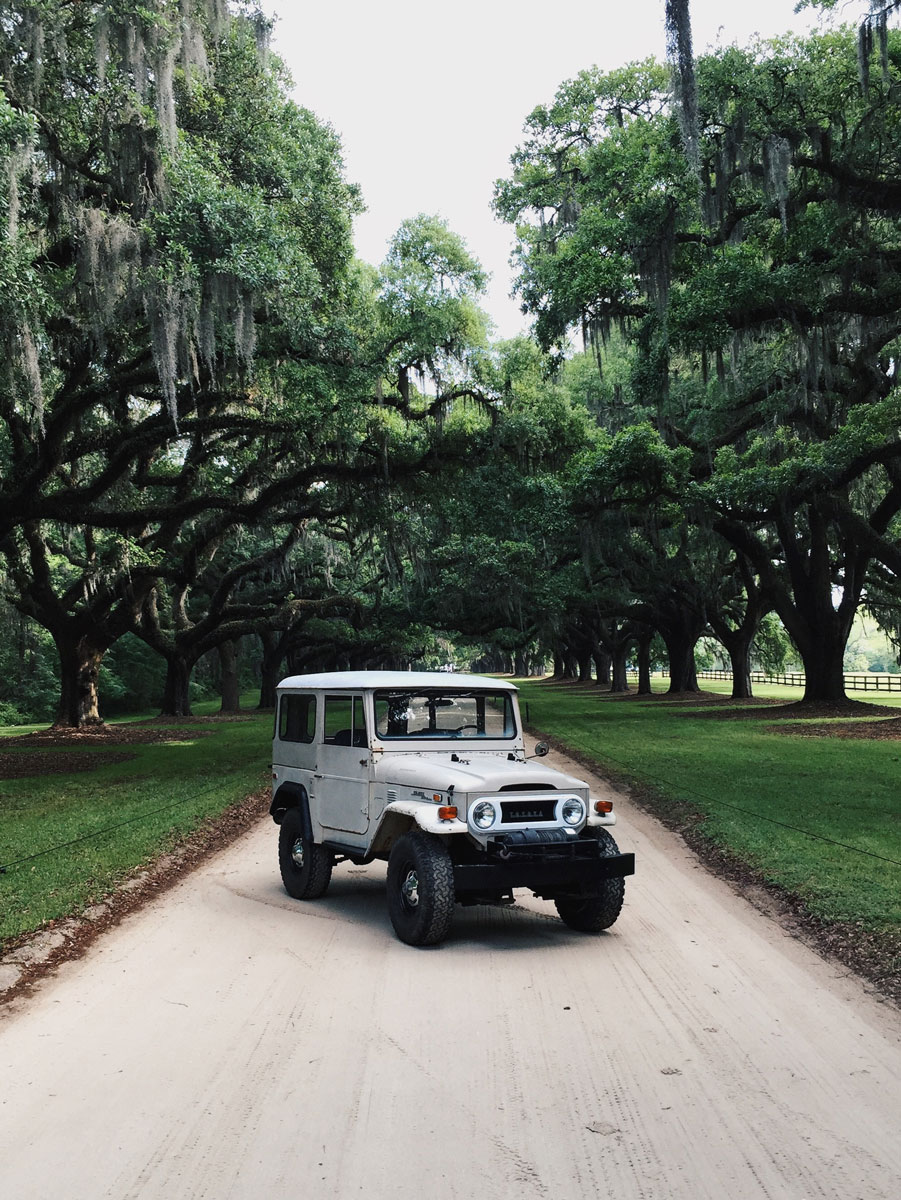
The Hunt for Authenticity
While sourcing authentic parts for your truck restoration project can be challenging, it’s a fundamental aspect of preserving the truck’s originality. There are so many places online and many brands now have specialty retailers that specialize in old cars and even have the tools to help make the work easier.
When it comes to maintaining your vehicle, replacing parts is going to be a must. To guarantee authenticity, compare the details of new parts with those of old ones (OEM) to evaluate whether they align with the specifications.
Salvage yards can also be treasure troves of authentic parts. Employing the salvage yard’s online Parts Search Tool can help identify particular items, assess the market value of the parts, and cultivate connections with the yard personnel.
Networking with fellow enthusiasts through forums, car clubs, and events can also provide valuable insights, guidance, and leads for acquiring rare authentic parts.
Paint and Personality
Choosing the right paint finish for your truck is a significant decision that influences the overall aesthetics of your restoration. There are various paint finishes available for classic trucks, including lacquer, enamel, and urethane. When selecting a color for your restoration project, consider using the original color for an authentic restoration. Additionally, you can choose colors that best complement the truck’s style and personality.
A lot of people now don’t do new paint at all. Just cover that beautiful patina with some protectant and let the years show.
Upgrades and Modernizations
Although authenticity is important, modern upgrades can greatly improve the performance and comfort of your restored truck.
Restored trucks have the potential to undergo significant engine performance upgrades, which can include 350hp fuel-injected engines all the way up to supercharged 800hp configurations.
Upgrading a truck’s transmission is another way to improve its performance.
This complex task depends on the specific design of the truck and whether it has all-wheel drive. The upgrade is typically aimed at enhancing operational efficiency and bringing the truck’s performance closer to that of a modern vehicle.
If you lack the experience with this, please seek professional assistance to make the modifications are implemented correctly and safely. We’re all sharing the roads and you don’t want to put anyone else in danger.
Suspension and Steering Solutions
The key components comprising a truck’s suspension and steering systems encompass:
- Steering Gear Box
- Center Link
- Pitman Arm
- Idler Arm
- Tie Rods
- Wheels and tires
- Springs
- Shock absorbers and struts
- Linkages
- Bushings, bearings, and joints
The performance and safety of your restored truck heavily rely on these systems.
To evaluate the state of a classic truck’s suspension and steering systems, it is recommended to conduct a visual inspection of the components by elevating the vehicle and examining all pivots and moving parts for signs of wear or damage. Indications of suspension and steering problems in classic trucks encompass:
- Challenges in turning the steering wheel
- Vibrations
- Decreased power steering fluid
- Dysfunctional power steering pump
- Fluid seepage
- Steering difficulties
- Uneven tire wear
Therefore, it’s clear that suspension plays a crucial role in ensuring optimal handling and driving characteristics, making it a vital aspect to prioritize during the restoration process.
Final Touches: Accessories and Trim
The process of adding final touches to your truck restoration project is an enjoyable part of the process.
When choosing accessories for a classic truck restoration, consider vintage parts for authenticity (if that’s what you’re going for) and practical accessories for utility, such as a triple-ball trailer hitch or a wireless back-up camera.
Selecting the right trim involves finding materials that achieve an authentic look and feel, as well as ensuring a professional fit by carefully measuring corner angles and making angled cuts.
This is really a “how much work do you want to do” thing. I like to have my interiors looking nice so I rely on professionals almost every time. When they show me what they can do and how long it will take them vs how long it would take me, I’m sold. Plus, sometimes they can have a cool style that you might not have seen or thought about.
The Restoration Timeline
Having a grasp on the timeline of a vintage truck restoration project aids in managing expectations and planning tasks efficiently.
The planning stage typically requires several months, as it encompasses the establishment of a vision, budgeting, and assessment of the workload involved.
Sourcing parts for a truck restoration also takes several months, as it involves finding, purchasing, and potentially refurbishing parts.
The time required for each phase varies, sometimes drastically between restoration shops and even more if you decide to do it yourself.
When to Call in the Professionals
Restoring a classic truck can be a fulfilling DIY project, but there are times where professional help is the best option.
Complex repairs beyond personal capabilities, requiring specialized skills, or aiming for a high-quality result beyond your individual capabilities are situations when professional restorers can be invaluable.
Complex repairs in truck restoration that should be entrusted to professionals in my opinion include welding services for heavy-duty trucks and extensive rust repair that may require skilled workmanship and specialized equipment.
Specialized skills that are often required during a classic truck restoration include expertise in restoring the body, performing creative paintwork, refurbishing the interior, and experience as classic car mechanics and bodywork specialists.
Some of these things are hard! You can try it on your own, but again, if you care more about the look than the idea that you did it on your own then there will be times when finding a professional is the better option.
Professional help is available for any aspect of your truck restoration project and it’s okay to use it. When you end up with a truck you love, it doesn’t matter how you got there, you got there.
Summary
Restoring a classic truck is a journey of discovery, craftsmanship, and personal satisfaction.
From assessing the worthiness of the project, planning, sourcing authentic parts, bringing the engine back to life, repairing the body, upgrading the interior, painting the truck, to adding the final touches, each step is a testament to your dedication and love for classic vehicles.
While the process may be time-consuming and challenging, the joy of breathing new life into a piece of history is beyond compare.
Frequently Asked Questions
What to do first when restoring a truck?
The first step in restoring a truck is to remove all the damaged parts such as bumpers, fenders, doors, hood, and then assess the damage and begin repairing or replacing them as necessary. This will set the foundation for the rest of the restoration process.
Is it hard to restore a truck?
Restoring a truck can be challenging, especially if you’re not experienced. Enlisting a team of skilled individuals can help make the process more manageable and cost-effective.
What is the best old truck to restore?
The best old trucks for restoration, especially for beginners, are the Ford F-series from the 50s, 60s, and 70s, and the “square-body” offerings from Chevrolet and GMC in the 70s and 80s. These models are known for their ease of restoration.
How long does it take to restore an old truck?
Restoring an old truck typically takes about 1,000 hours of labor, which translates to approximately four months if working on it full-time.
Is restoring a classic truck worth it?
Restoring a classic truck can be worth it if you consider the potential value, personal satisfaction, and the historical significance it holds. It’s a valuable and rewarding experience.

